While the primary function of a chair, to provide a seat, has remained relatively constant, the chair itself has undergone countless transformations due to evolving materials, technologies, and design aesthetics. Throughout history, many famous architects have designed chairs in addition to their iconic structures. These iconic chairs say a lot about the designer’s design method and perspective on design. A chair, which is an important part of a space, is a valuable piece of furniture that reflects the design understanding and creativity of the architect who designed it.
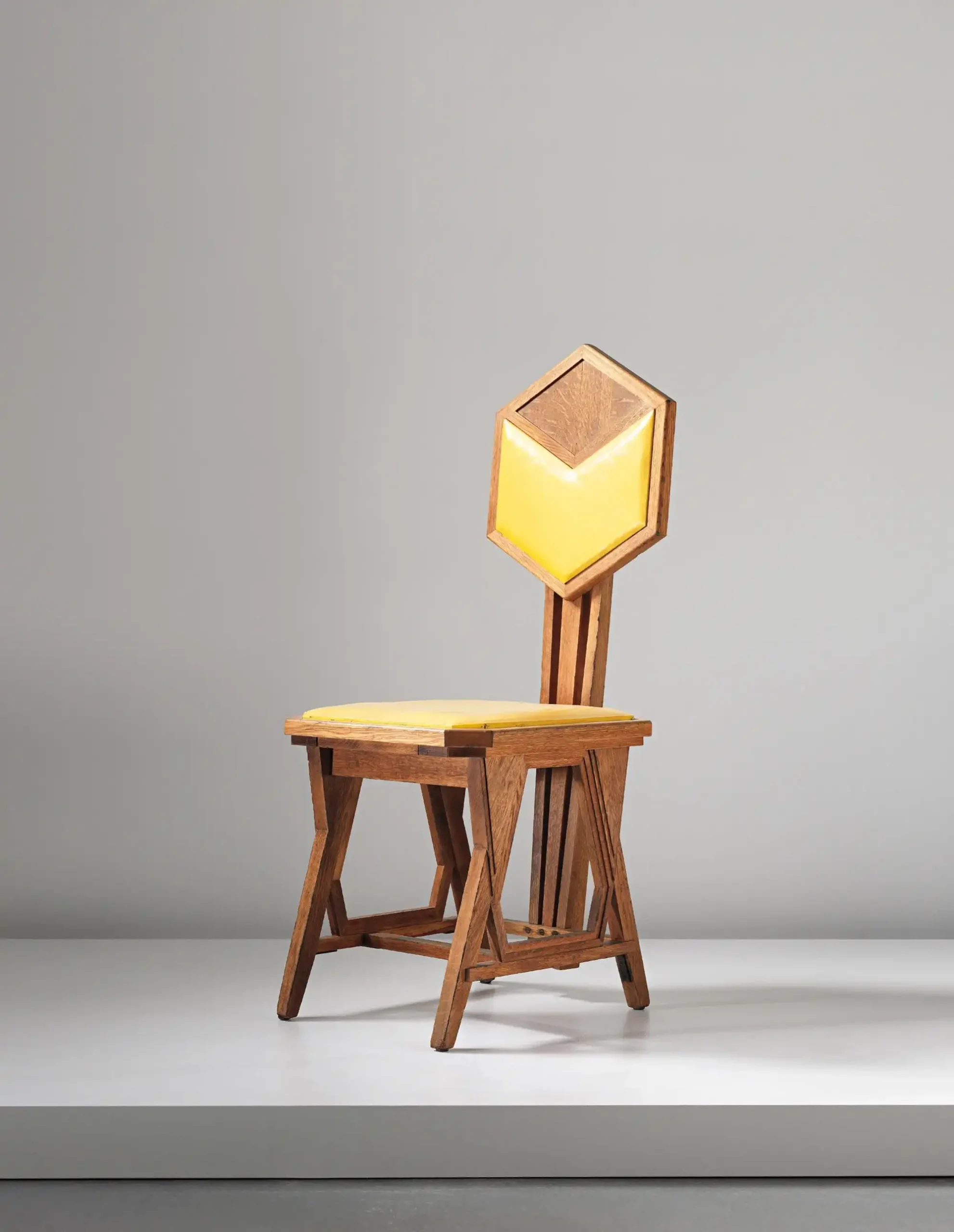
Iconic chairs designed by famous architects are works that offer an aesthetic that is beyond time by pushing the boundaries of the design concept of the period in which they were designed. These iconic chairs, which gain their own unique function and appearance with the materials chosen by the architects and the way they shape these materials, continue to maintain their popularity from the day they were designed.
Here are ten unique chairs by famous architects that have become iconic:
Egg Chair
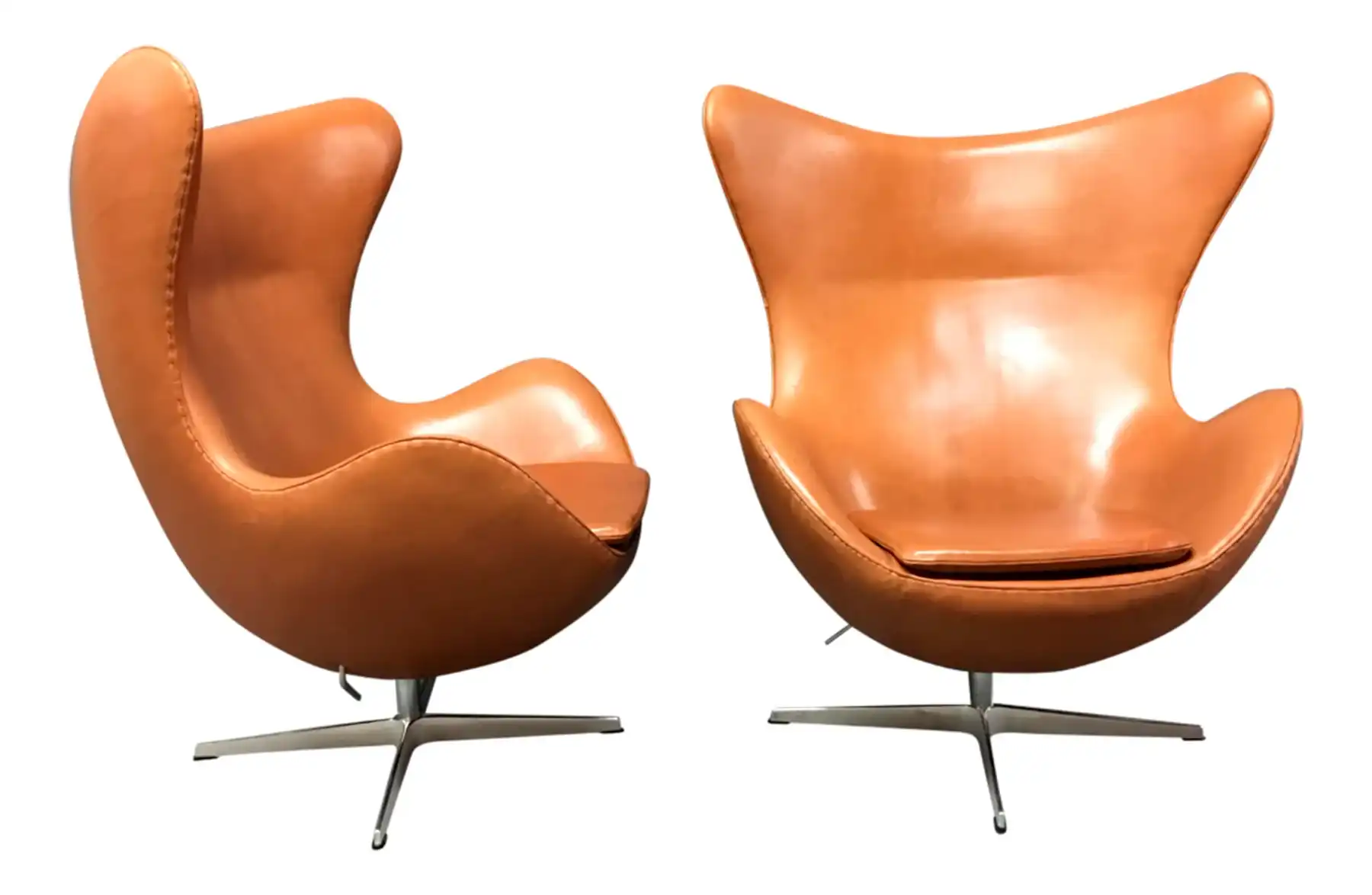
Designer: Arne Jacobsen
Year: 1958
Danish architect Arne Jacobsen is a significant icon of modernism and Danish architecture. In 1958, he designed the iconic Egg Chair specifically for the SAS Royal Hotel (now Radisson Collection Royal Hotel), which he had also designed. With its organic, sculptural form, the Egg Chair has become a global icon. A symbol of modernism and functionality, the chair is molded from a rigid foam and upholstered with cushions. Usually upholstered in leather or fabric, the Egg chair is available in different materials and colors.
With its high back and armrests, and swivel base, it is a suitable and comfortable chair for long sessions. Considered a design classic, the Egg Chair becomes a part of the space with its aesthetic appearance and high comfort.
Tulip Armchair
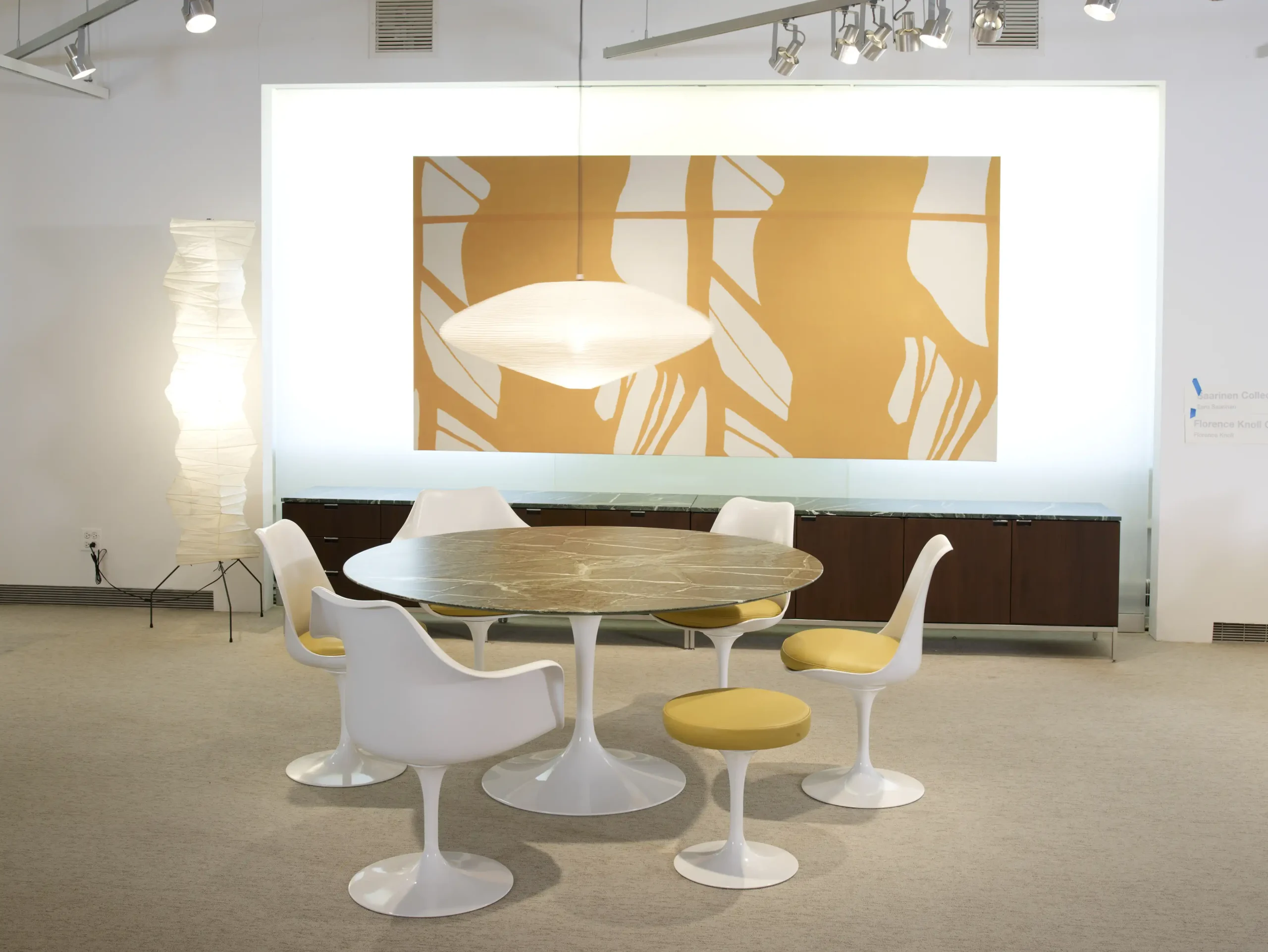
Designer: Eero Saarinen
Year: 1958
The iconic chair by Finnish-American architect Eero Saarinen belongs to the Tulip Armchair Pedestal Collection. One of the most prominent examples of modern design, the chair has soft, straight lines and clear curves, just like Saarinen’s structures. Saarinen found the bases of tables and chairs ugly and confusing and aimed to produce furniture with a cleaner and modern appearance. This chair, which resembles a tulip but also reminds us of a stemmed wine glass, departs from the typical four-legged design, instead rising on a single pedestal base.
The chair’s leg is made of aluminum, while its body is constructed of fiberglass. The polyester resin used in conjunction with fiberglass solidifies the mixture, giving the chair body its desired form. With its simple lines, organic form, and functionality, this iconic Tulip Armchair designed by Eero Saarinen is one of the most important examples of 20th-century design.
Eames Lounge Chair and Ottoman
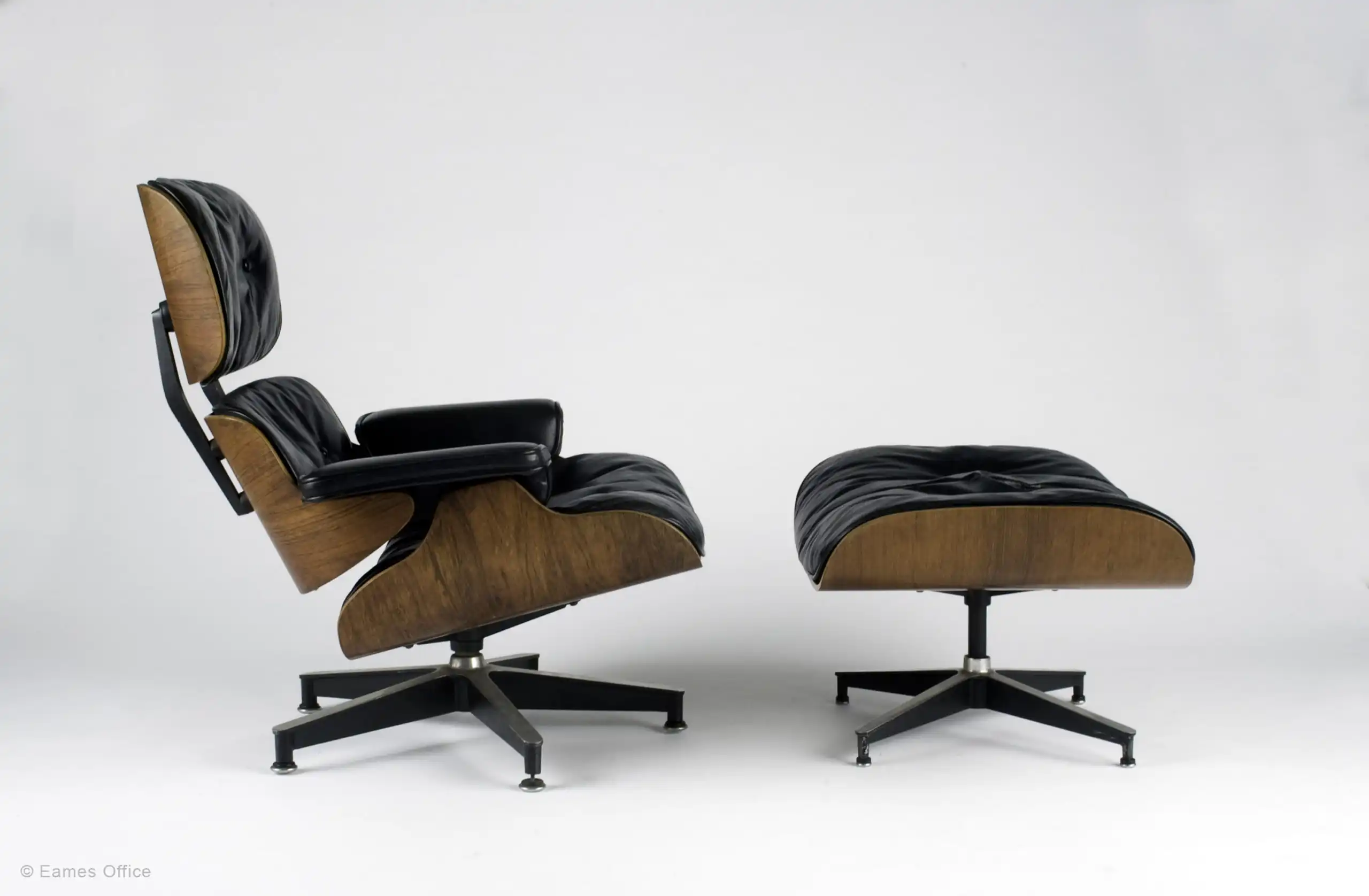
Designer: Charles and Ray Eames
Year: 1956
Charles and Ray Eames, one of the most important design couples of the 20th century, are known for their iconic designs in the fields of architecture and furniture. The Eames lounge chair, produced for Herman Miller Furniture, has become an icon of modern design with its simple lines, functionality, and organic form. Inspired by the classic English club chair, this iconic chair consists of a multi-layered wooden (plywood) shell mounted on a swiveling aluminum base and upholstered in soft leather.
The wooden shell is shaped by hand, giving the chair an organic look. The Eames Lounge Chair is usually used with an ottoman produced with the same design approach. This iconic chair, which brings aesthetics and comfort to the interior where it is used, is the first chair designed by the Eames couple for production and market. Designed with comfort in mind, this luxurious chair has become an important icon of modern furniture design.
Bowl Chair
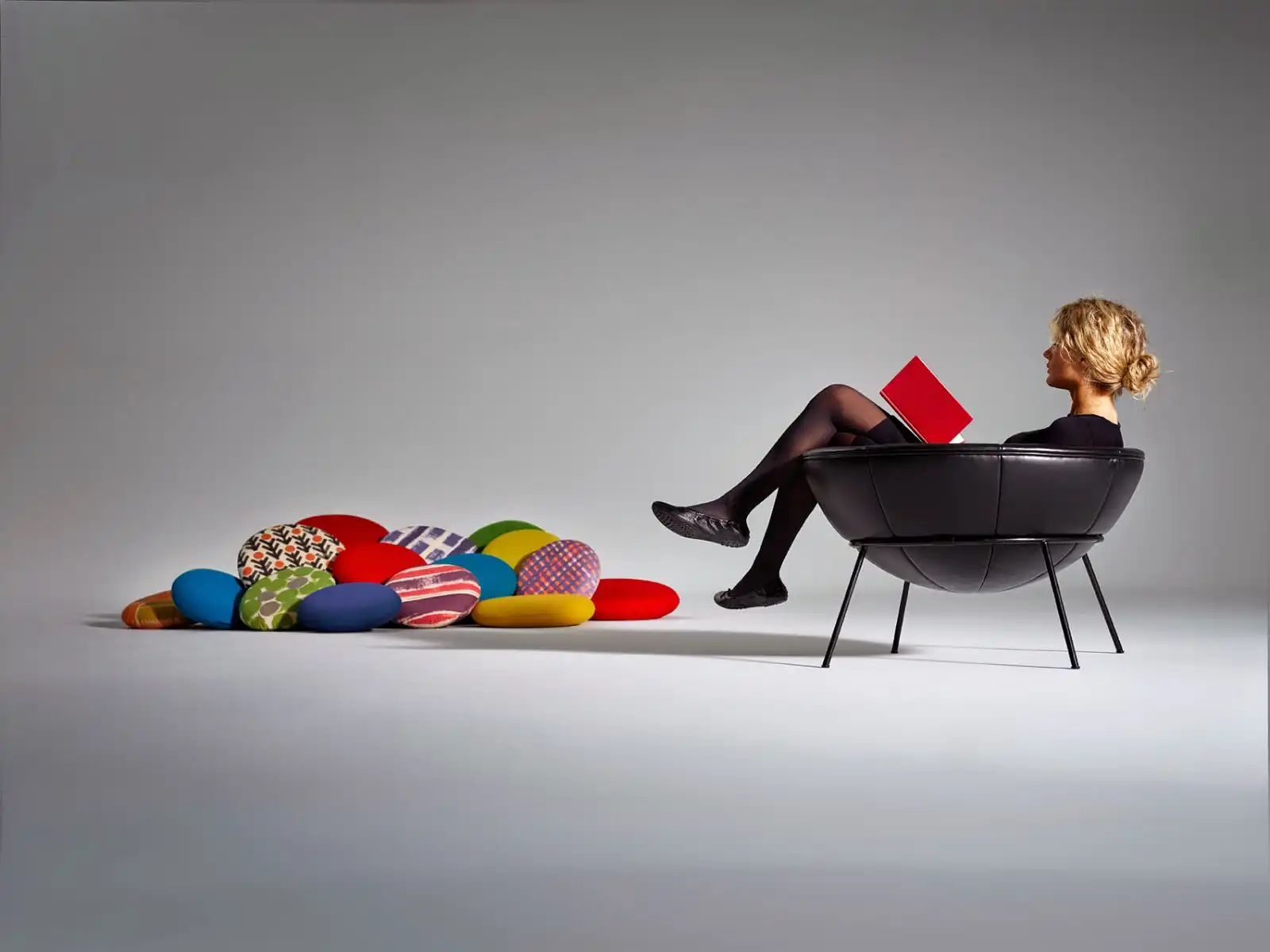
Designer: Lina Bo Bardi
Year: 1951
Lina Bo Bardi, a Brazilian modernist architect known for her significant impact on Brazilian modernism, created the iconic Bowl Chair. This chair serves as a tangible embodiment of Bo Bardi’s architectural philosophy. With its simple yet sophisticated design, the Bowl Chair takes its name from the large, round bowl-like seat inspired by nature. Aiming to design a chair that adapts to people, Lina Bo Bardi offers an aesthetic design with its organic form and a comfortable experience for the user.
The iconic chair, which adds a warm atmosphere to the space it is in, is a bowl-shaped chair that stands on a metallic ring supported by four thin legs. The Bowl Chair is not just a seating tool, and it is an example of Bo Bardi’s human-focused design. This design, which has an important place both aesthetically and culturally, is remarkable with its organic form, functionality, and comfort.
Panton Chair
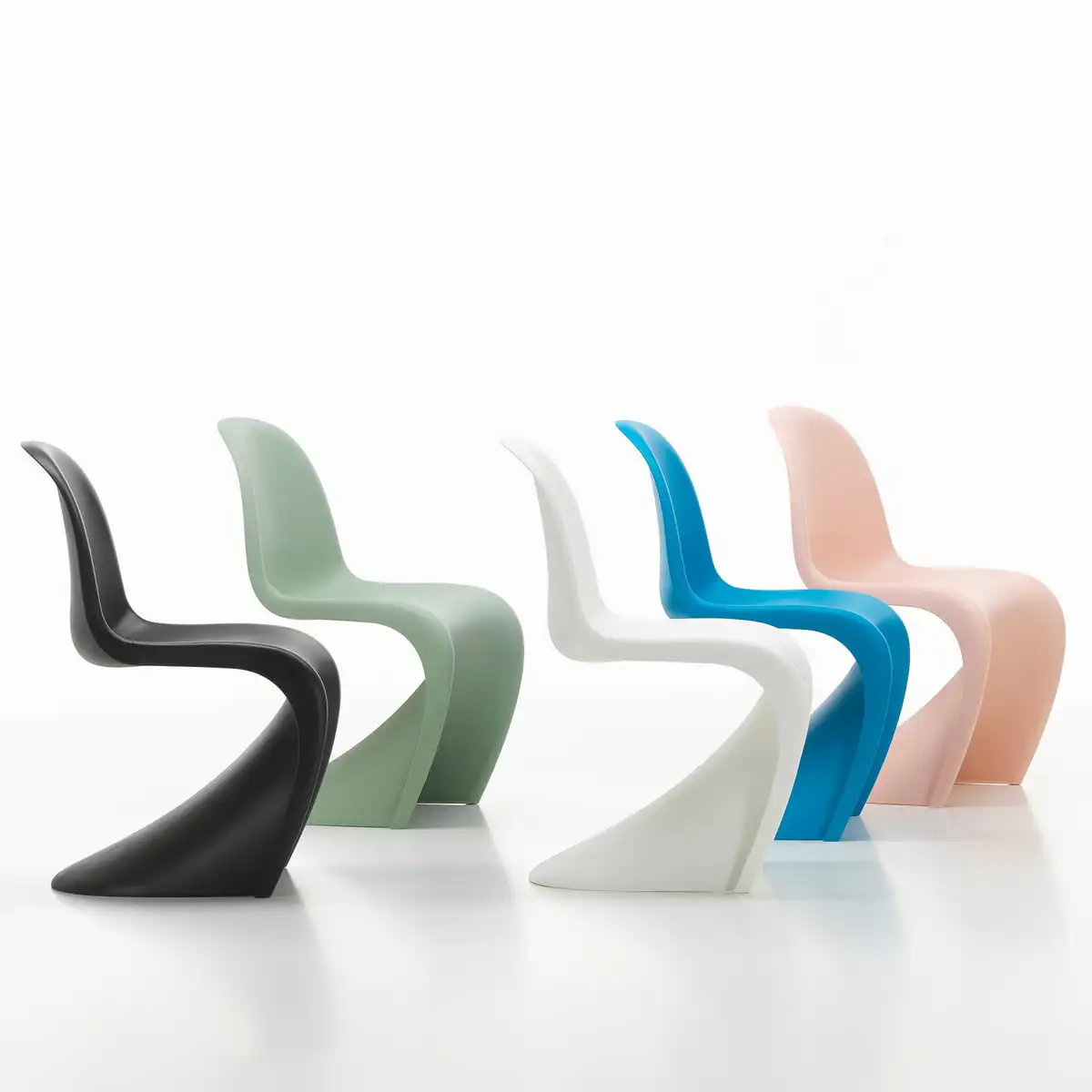
Designer: Verner Panton
Year: 1958
Danish architect and designer Verner Panton is known for his versatile works, which have been created with basic geometric forms and figures throughout his long career. One of the most well-known furniture designs, the Panton Chair is one of the iconic pieces of modern design with its simple and plain lines. The Panton Chair is the world’s first chair made of plastic in one piece. The plastic material used in production provides the chair with lightness and durability while also allowing for different color options. This iconic chair, which has become a design classic, has a fluid form resembling the letter S.
In 2008, the child-sized Panton Junior was produced, remaining faithful to the chair’s original plans. The Panton chair adds a modern and dynamic atmosphere to the space it is located in and is striking with its minimalist design.
Barcelona Chair
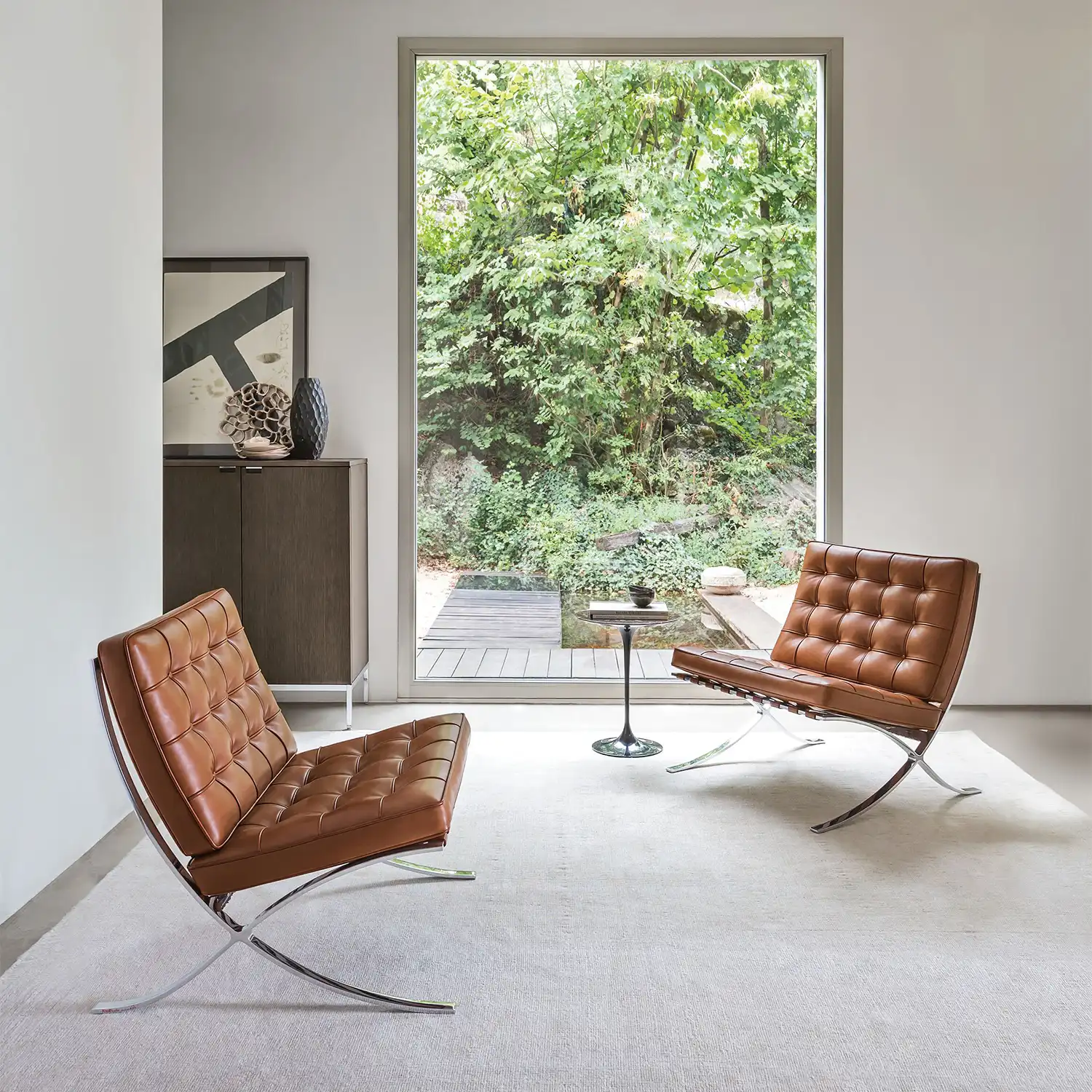
Designer: Ludwig Mies van der Rohe
Year: 1929
Ludwig Mies van der Rohe, one of the pioneers of modern architecture, dedicated a large part of his design life to developing a new design language that reflected modern architecture. The Barcelona chair, which he designed with Lilly Reich, is the most prominent example of Mies’s “less is more” philosophy. This iconic chair, which draws attention with its simple and elegant lines, was designed for the Barcelona International Exposition in 1929. Inspired by the X form he saw in many designs, from ancient Egyptian folding stools to 19th-century neoclassical chairs, Mies designed the Barcelona chair in an X form with curved lines created by shifting the design axis.
The chair has a stainless steel frame and was originally upholstered in ivory pigskin. However, it was later produced with traditional leather. One of the most recognizable pieces of furniture of the 20th century, the Barcelona chair, an icon of the modern movement, is a luxury piece of furniture handcrafted for the Spanish Royal. Although this iconic chair was not designed for mass production, production began in 1953 with Knoll, and the original prototypes were developed by reconstructing the frame with seamless welded joints.
For those captivated by the timeless elegance and innovative spirit of iconic furniture design, PAACADEMY offers an unparalleled opportunity to deepen your craft. Immerse yourself in a world where creativity meets precision, exploring the legacy of visionary architects and designers through cutting-edge workshops and expert-led courses. From mastering parametric techniques to reimagining form and function, PAACADEMY empowers you to shape the future of design with the same daring ingenuity that defines these legendary chairs. Elevate your skills and join a community of forward-thinkers, your seat at the table awaits.
Alta Armchair
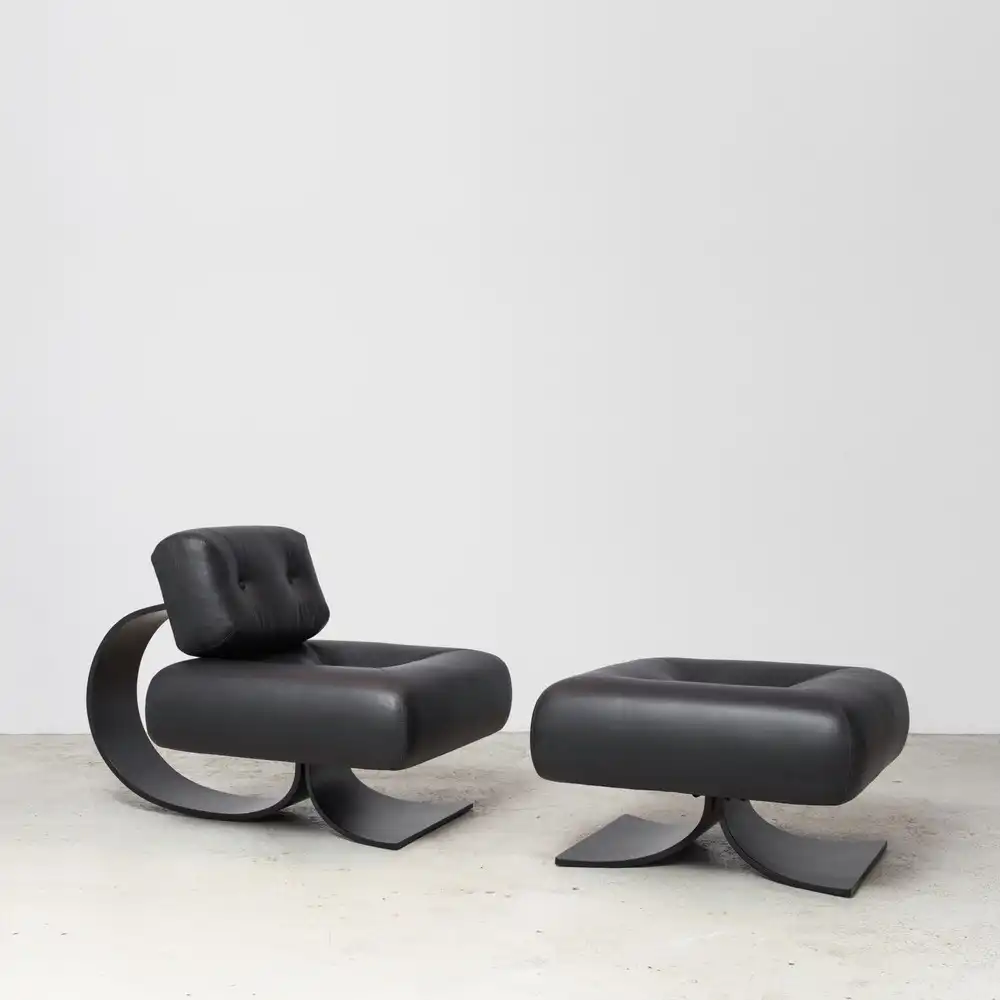
Designer: Oscar Niemeyer
Year:1971
Brazilian architect Oscar Niemeyer, renowned for his iconic architectural works worldwide, has left a significant mark on the history of modern architecture with his organic forms and flowing lines. Designed in collaboration with his daughter, Anna Maria Alta, the Armchair resembles Niemeyer’s structures with its curvy lines and complex form. More than just a seating element, this iconic chair is a significant piece of modern design. Its bold, sculptural form evokes the fluidity of natural curves, perfectly reflecting Niemeyer’s distinctive style.
Crafted from high-quality materials such as black lacquered wood and leather, the Alta Armchair offers a wide and comfortable seating area. With its aesthetic appeal and comfort, the Alta Armchair, with its fine craftsmanship and impeccable details, has become a design icon.
Peacock Chair
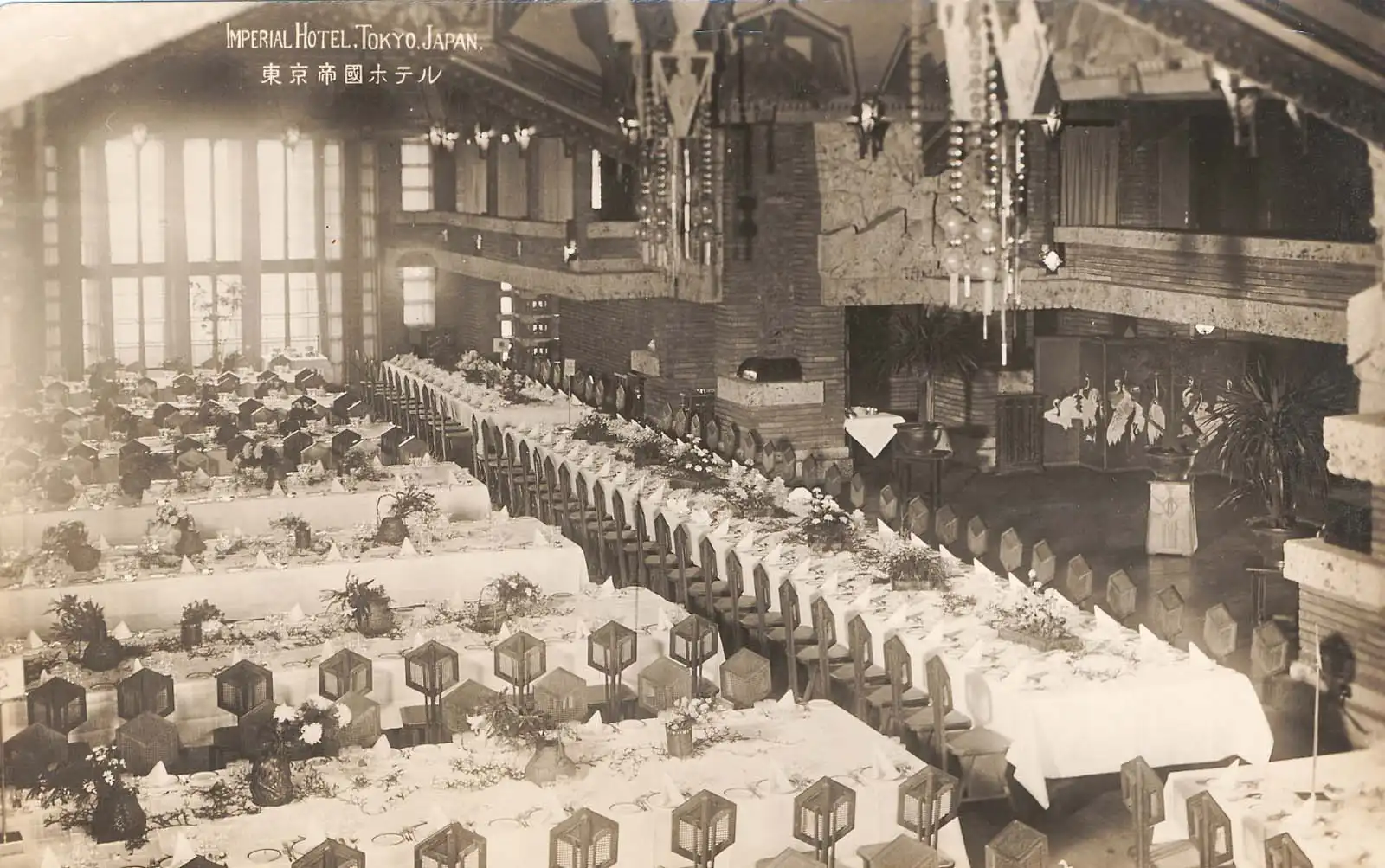
Designer: Frank Lloyd Wright
Year: 1921
Frank Lloyd Wright, a pioneer of organic architecture, was an American architect who designed some of the world’s most iconic buildings. One of Wright’s most important achievements, the Peacock chair he designed for the Tokyo Imperial Hotel, is an architectural masterpiece that showcases Wright’s genius. Designed for the Peacock Room of the hotel, this iconic chair is a testament to Wright’s masterful use of geometric forms. Composed of a hexagonal backrest and geometric legs, the chair has a wooden frame and is upholstered in waxed fabric.
The wicker panels on the back and sides of the original design were removed because they were too fragile, resulting in the current design. The chair’s hexagonal upholstered backrest is divided into a rhombus with a wooden panel on top. With its hexagonal back and square seat, this iconic chair complements the Imperial Hotel’s Mayan Revival exterior. Drawing attention with its geometric design and handcrafted workmanship, the Peacock chair is a striking piece of furniture.
Wassily Chair
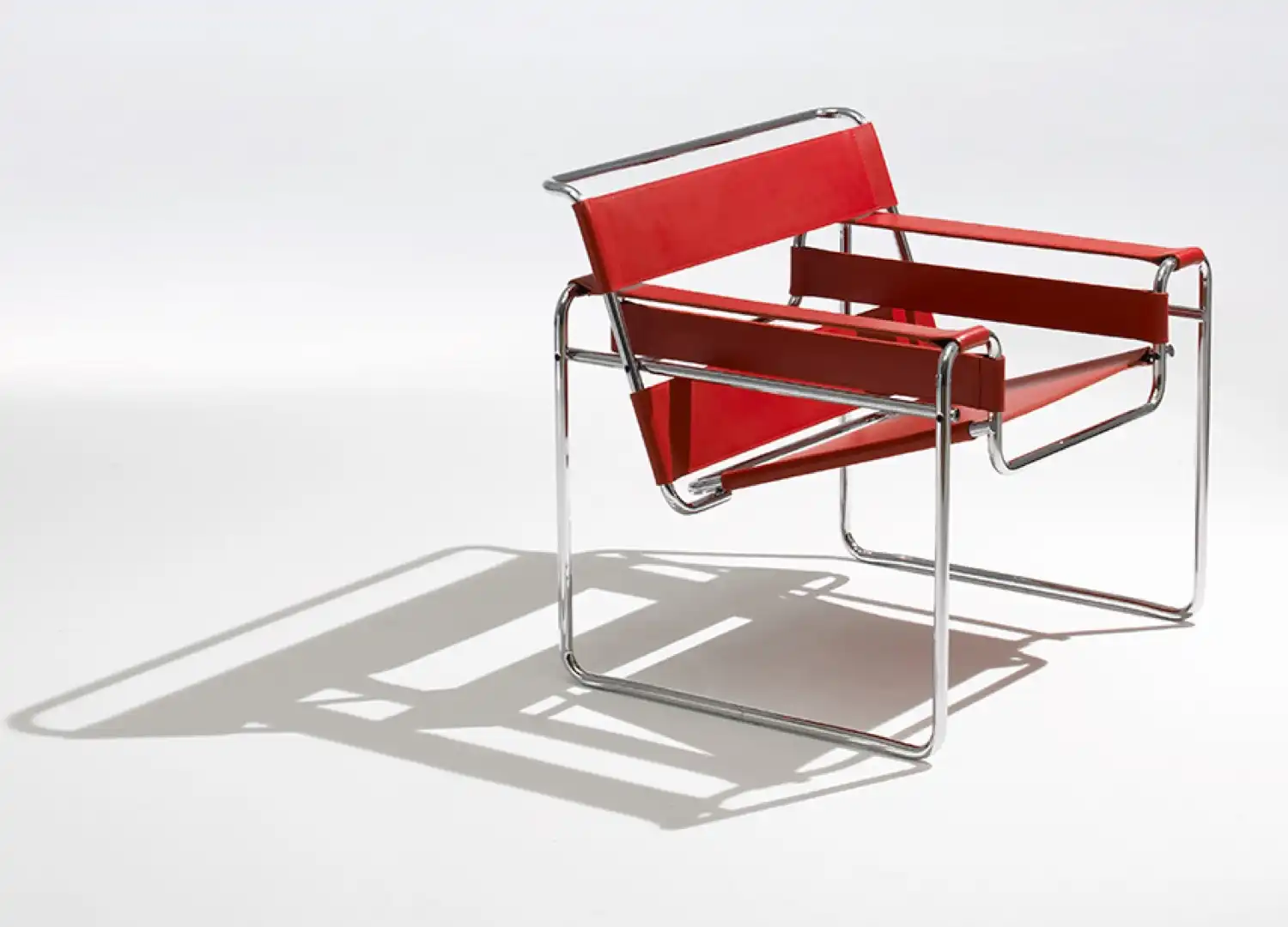
Designer: Marcel Breuer
Year: 1925
As one of the first students of the Bauhaus School of Art and Design, Marcel Breuer reflected his unique design language and aesthetic in many of his works. With its sense of openness and lightness, the Model B3, known as the Wassily Chair, is one of the iconic chairs designed by Breuner. Breuner was inspired by the handlebars of the Adler bicycle in the design of the Wassily Chair. Admiring the bicycle’s tubular frame, Breuer simplified the bicycle system to its purest form and applied his own interpretation to the classic club chair.
The steel tube frame made the Wassily Chair a lightweight, sturdy, and modern piece of furniture. An iconic symbol in the history of modern furniture, this sculptural chair offers a seating experience where the user feels suspended above the ground, supported by only two legs. The Wassily Chair changed the traditional concept of a chair of its time and highlighted the lines and planes that compose the chair.
Paimio Chair
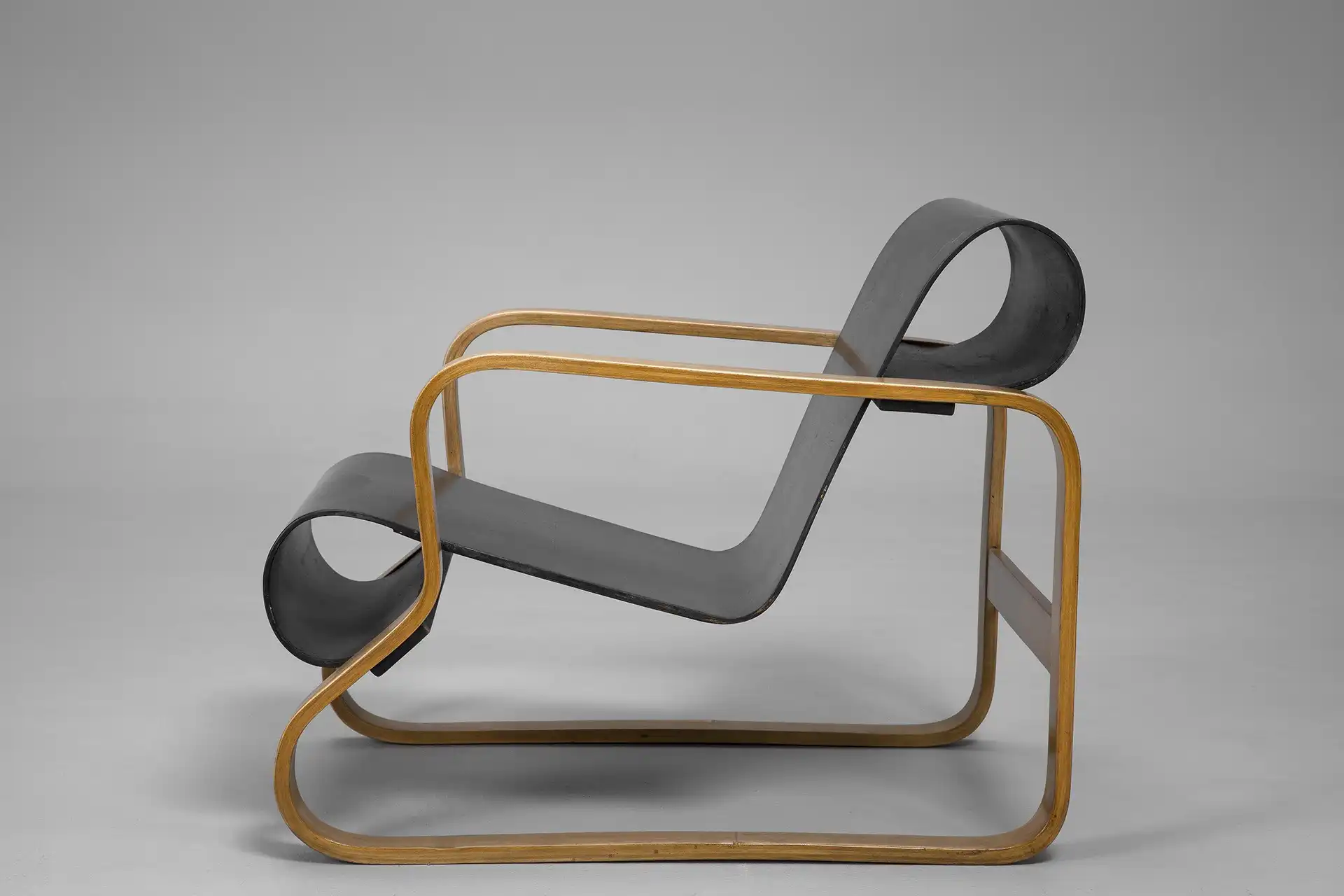
Designer: Alvar Aalto
Year: 1931
Alvar Aalto, one of the most significant architects of 20th-century modernism, designed the iconic Paimio chair for the Paimio Sanatorium, which he also designed. This chair, which has a timeless sculptural appearance, combines a traditional outline with a light, organic form. Originally named Armchair 41 but commonly known as the Paimio chair, it was designed to allow patients to sit for long periods of time and breathe comfortably in the treatment of tuberculosis. The angle of the chair’s backrest is specifically designed to facilitate easy breathing for the sitter. Inspired by Marcel Breuer’s Club Chair, Aalto chose local birch for the Paimio chair due to its natural feel and insulating properties.
This iconic chair, which was created by pushing the limits of plywood production in the early 1930s with its organic form, is a piece of furniture made of bent wood. The chair’s frame consists of two closed laminated wooden rings that form the skeleton, arms, legs, and floor rails. Between these rings, a thin plywood sheet, curved inward at both the top and bottom and fixed to the frame at only four points, forms the flexible-looking seat. By combining functionality and aesthetics, the Paimio Chair is a reflection of Aalto’s “form follows function” principle, often seen in his architecture.




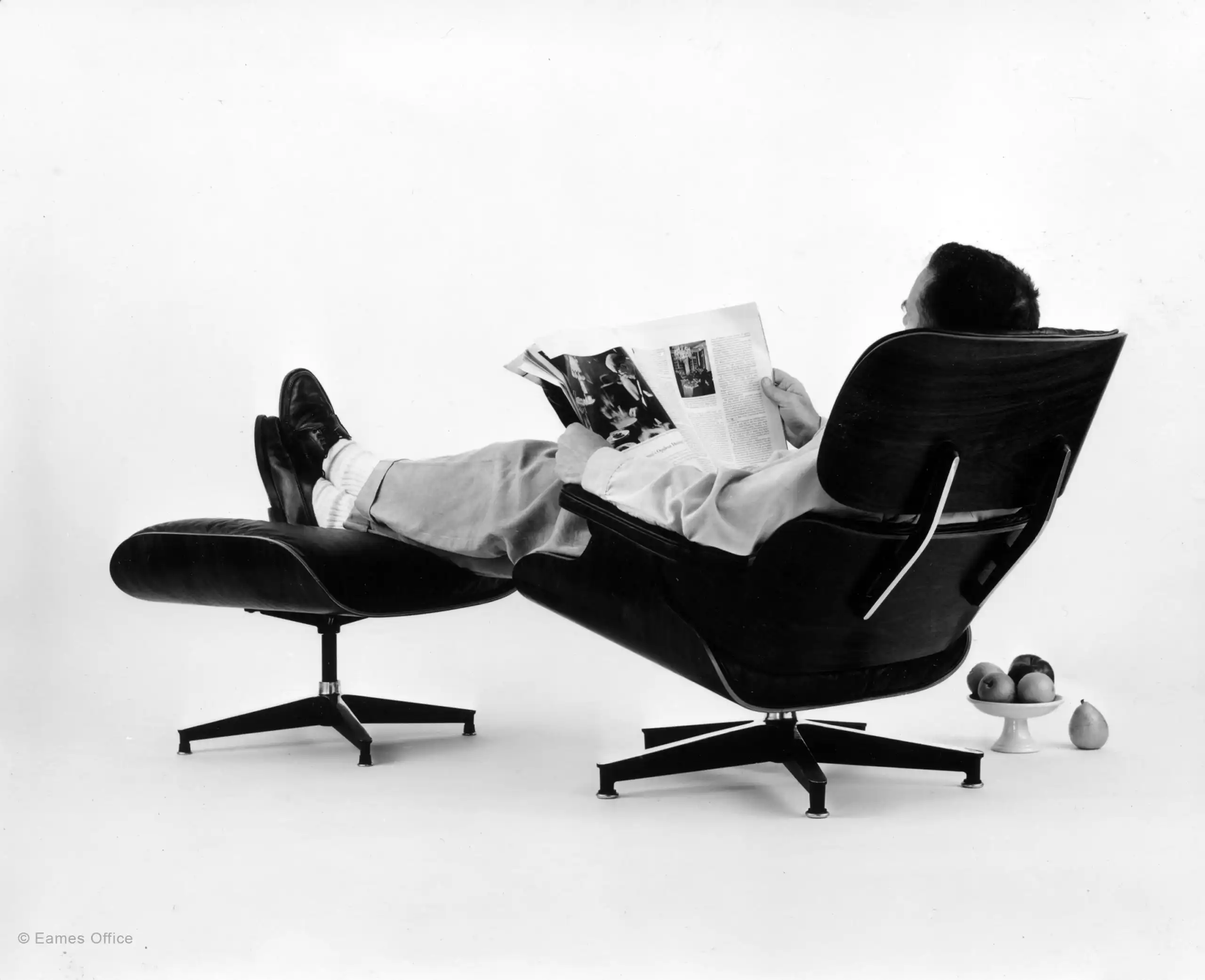















Leave a comment